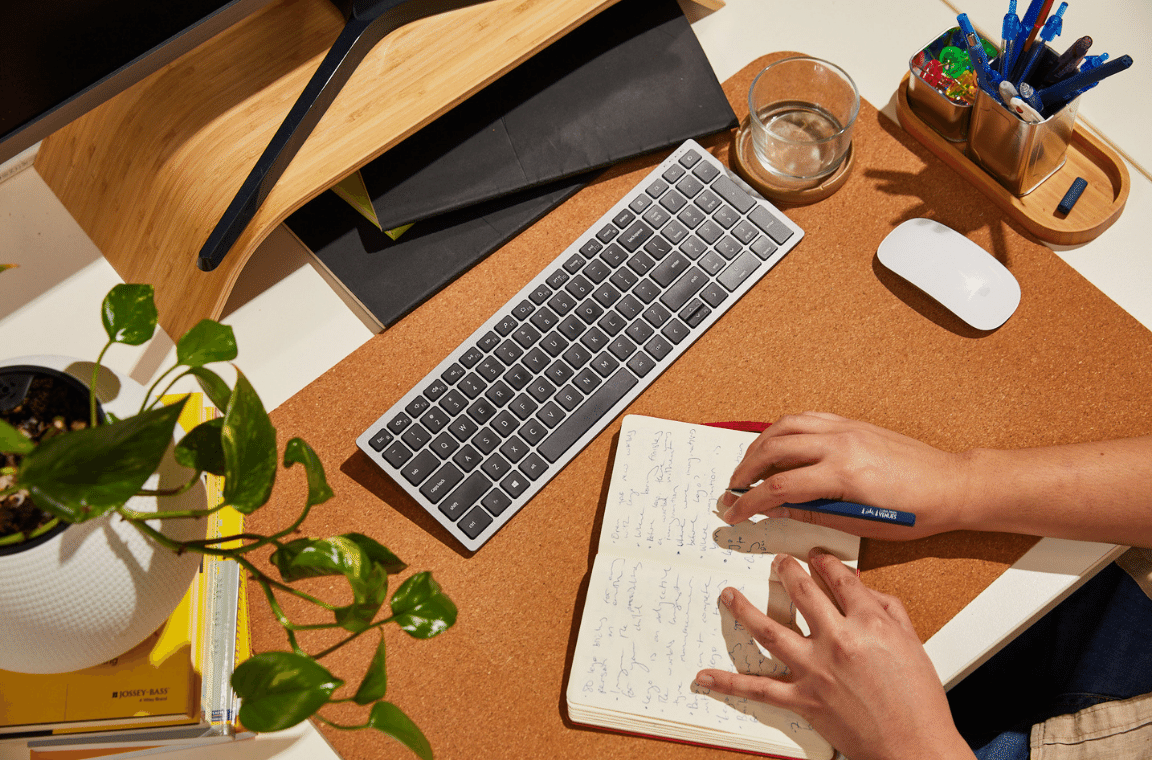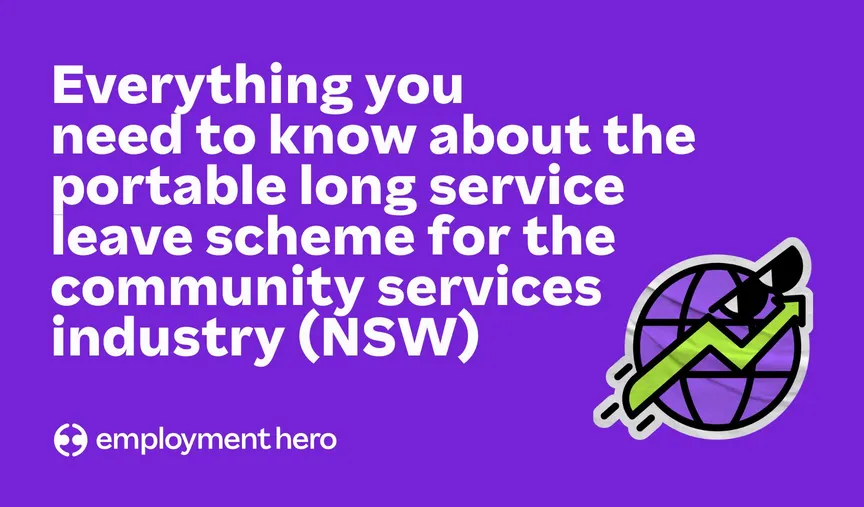10 tips for better work-life balance while working from home
By developing — and sticking to — a daily routine, we can bring a sense of order back to our lives. Here are a few tips to get you started.

Cast your mind back to three years ago. Working from home wasn’t on the cards, and little did we know it would become our main method of working throughout an oncoming pandemic. Now, for most of us – we’ve mastered the art, and it’s become a very normal part of our working life.
The positive benefits that remote work brings are obvious. It provides flexibility like no other, promotes inclusion, and greatly benefits working parents. However, there’s no denying it’s made lines between work time and home a little more blurry.
Typically, we’re wired to think that we need two separate environments for home and work. Now that we’re faced with a blended environment, it’s important to set boundaries to make sure we’re working during working hours and relaxing when we’re not.
Before we dive into how to improve work-life balance, let’s go back to basics.
What is work-life balance?
Put simply, work-life balance means finding harmony and balance between your work and personal lives. A good work-life balance will look different for everyone and depends on a range of factors, such as the type of work you do and the level of responsibilities you have outside of work.
However, the reality is that we can lose track of a healthy work-life balance before we even begin to realise it. After all, it’s easier than ever before to simply pick up your phone and reply to that message from home or jump on that video call after working hours.
Managing work and life is a balancing act and we’re here to show you how… After all, do you live to work, or work to live?
Why is work-life balance important?
Let’s take a look at the dimensions of health and wellbeing. If work is taking up most of your time – day in and day out – chances are the other dimensions of your health are suffering.
With many employees working in a hybrid capacity at least some of the time, striking the balance between these two worlds has never been so important. However, it’s important to remember that when we think about work-life balance today, it’s against the backdrop of the volatile emotional environment of the last three years.
Your stress levels might be high, meaning that you might not be eating a balanced diet, getting quality sleep, exercising or making time for friends, family and hobbies. Chances are, your mental health is also suffering as a result.
We all know that spending too much time working can leave you feeling burnt out, uninspired and disengaged. This then trickles into your personal life, where you might start to feel unmotivated to maintain a social life. This can then lead to disengaging from hobbies because you’re simply too tired from the working day.
The reality is that when longer hours are added to the equation, the result is often manifested through remote work burnout, fatigue and a work-life balance that’s off-centre.
To support your remote employees’ wellbeing and manage work-life balance effectively, explore our article on 10 Ways to Support Remote Employee Wellbeing.
And the numbers prove just how important work-life balance is…
At the start of 2022, we surveyed over 1,000 workers from around Australia in our Wellness at Work Report. We asked questions about work-life balance, productivity, burnout and so much more.
While some findings were surprising, others were clear. We found that burnout and a sense of work-life balance are deeply tied to productivity and one’s capacity to do their best work – and between these elements, we see a vicious cycle occurring.
Employees who stated that they had poor work-life balance were 76% more likely to also have felt burnt out. Those who felt burnt out were 35% more likely to feel that their productivity was low, and employees with poor productivity were 280% more likely to feel a poor sense of work-life balance.
Striking the perfect work-life balance can help you maintain a strong and committed work ethic, as well as ensure you’re prioritising time spent with friends and family. After all, we all know just how easy it can be to get stuck in the habit of checking your emails on the weekend or checking Slack messages after you’ve clocked off for the day.
Without clearly defined boundaries, you’re on a one-way road to burnout and the dreaded remote working rut.
How do you manage work-life balance while working from home?
1. It starts with planning
Before you start work for the day, plan out what it’s going to look like. Include things such as meetings, goals, breaks and when you plan to clock off. Sticking to a plan is going to aid in your productivity and will keep you solely concentrated on your work. It will also help you mentally prepare for the day.
Plan when to clock off
One of the most important parts of planning is determining what time you are going to clock off for the day. Think of setting this time as a mini deadline where you need to have achieved everything that you had set out to achieve on that day. Doing this will also ensure that you’re completely switching off from work before you dedicate time to relax, spend with your family and unwind.
Plan when and where to have lunch
When you have your lunch break make sure that you do so in a separate space from where you are working. This too is a small gateway into overstepping work and home boundaries. It’s not encouraged to have lunch at your desk in the physical office space so you shouldn’t be doing it at home either.
Plan your day the night before
A simple way to plan ahead is to jot down a rough draft of your to-do list the evening before. Once you’re up and running in the morning, you can take stock of the day’s activities at a quick glance.
There are countless productivity systems out there to try. There are bullet journals to replace your traditional day planner and methods like the Pomodoro technique that can help you better manage your time. What’s essential is researching and finding one that works for you and your needs.

2. Establish a routine that works for you
Setting a routine for the days that you are working allows you to get in the mindset that you’re working today, helping to optimise your productivity throughout the day. For the days that you’re working:
- Get in the routine of waking up at the same time each morning.
- Have lunch at the same time.
- Set a time that you want to clock off work for the day (aim for between 5:30 and 6pm).
Achieving a work-life balance is tough for many people. Think of integrating the two instead and drop the idea that you have to balance them. This might mean going for a morning walk while simultaneously tuning into your daily team briefing. If this is feasible and you’re not required to be on your laptop, then why not? Two birds, one stone.
By doing this you are helping yourself set boundaries by telling your brain and your body that this morning or daily routine is what happens on a work day and this other routine indicates that today is not a work day.
3. A good night’s rest is best
We all know that sleep is our body’s way of restoring itself after a hard day of work, but how much sleep does the adult body really need? You might remember being told as a teenager that “growing teens need at least 8 hours of sleep a night”. Well, it turns out not much changes for us as adults.
On average, adults between the ages of 18 and 64 need around 7-9 hours of sleep a night, and just as importantly, we should maintain a regular sleep cycle. Having a regular bedtime each day helps keep our circadian rhythm in check. Putting your phone away 30 minutes before bed is also a great way to rest your eyes and let your brain relax before sleep.
Working from home can be stressful. As human beings, we naturally crave certainty, and we’re more prone to feeling stressed and anxious without it. By developing — and sticking to — a daily routine, we can claim a bit of that certainty back and help bring a sense of order back to our lives.

4. Dress the part
Just like having a set routine for your work days and your days off, you should do the same for your clothes. Have a dedicated ‘uniform’ for work that differs from what you will wear on your days off. This doesn’t have to be a suit or a full face of makeup. It could be yoga pants and a plain cotton top. If you roll out of bed and jump straight onto the computer in your pyjamas, chances are you’ll find it difficult to be alert and switched on from the get-go.
Even though you aren’t going into the office you still want to be presentable and be dressed in a way that makes your mind think ‘these are the clothes I wear for work, so I’m ready to work.’
5. Turn off noisy notifications
If you use communication tools like Slack or have any other kind of group chats for work, turn the notifications for these off when you finish for the day or the week. You may even find that turning these off when you take a lunch break is a good way to give your brain a proper break to ensure you’re refreshed.
It’s especially important to turn your work phone off (if you have one) when you aren’t at work. You can easily get in the habit of making it your primary device for contacting people at work and outside of work. The same goes for your personal devices. Don’t have these in the same room as you when you are working remotely if you aren’t contacted via that device for work purposes.
You want to dedicate 100% of your attention to your work and having personal devices in a room separate from where you are working will remove that potential distraction.
6. Emails… off
Turning off your work phone and notifications off when you aren’t working? The same goes for emails. Work-related emails are only to be read and responded to on work days, not on your days off or weekends. Doing this will take you away from being able to relax and spend time with your friends and family on your days off.
7. Be clear with your communication
Clearly outline with both your household and your colleagues the appropriate communication times. Notify your colleagues when you take your lunch break, letting them know when you’re going to be unavailable.
If you’re using Slack or another instant messaging tool, update your status. When communicating to your household, explain the times that you are 100% dedicated to them and the times when you need to be 100% dedicated to working. By doing this you are acknowledging that they are important and you want to give all of your attention to them when the time comes. The same goes for work; your household needs to understand and respect when you need to stay focused and committed to work.
A non-verbal reminder of this for your household could be to close the door to the room that you are working in so that they know that you are busy and don’t want to be disturbed. Once you’re no longer working you should leave that room you have dedicated to work.
8. A workspace that inspires
Having a dedicated space to work when working remotely is crucial. However, for those living in shared living spaces or smaller apartments, this can be hard. It’s incredibly important that you have a different workspace compared to where you relax and sleep.
If you don’t have an empty room that you can dedicate to a home office then find a space where a small desk can fit, ideally somewhere that gets plenty of natural light. Worst case scenario, if you have a dining table use that as your space.
You should avoid using the couch or your bed as your workspace. This will only blur the lines between work and personal time, making it harder to enjoy these spaces for relaxation because your mind will go into work mode when it should be in relax mode.

9. The importance of boundaries
Working remotely is great because it gives you such a great balance between work and home which allows you to be with your family more. But if you aren’t setting boundaries between work and home then you are actually isolating yourself more and spending more time at work than you would if you had to go into the office.
By not setting boundaries between your work life and your home life, you’re setting yourself up to fail in both aspects of your life. You need to do what is right by your employer and what is right by your family.
10. Don’t forgo your physical health
It’s really easy to get caught up in work, and with remote working, the blurred lines between work and relaxation can cause more strain on your brain. It’s essential to take time to eat well and away from your keyboard.
Make sure you use your lunch break as a time to take care of yourself and not use it to catch up on work. Go for a walk around your block each day or a run (whatever works for you). Finding 30 minutes across your day to do some moderate exercise is vital for your overall wellbeing. Between work, eating right and exercising, you want to spend time relaxing, unwinding and entertaining yourself. Whether that’s reading a book or playing games with your household, just remember to do something that brings you joy.
Step out for a session at the gym or perform some mindfulness or meditation exercises for a quick escape from work.
Remote work brings the work-life balance benefits
By making some changes to your current remote work routine, you’ll be on your way to achieving a healthy work-life balance in little to no time – and that brings a domino effect of benefits.
You’ll be happier and more content with your physical, occupational, recreational and mental health.
To address feelings of isolation that can arise from remote work, read our article on 14 Wellness Tips For Working From Home.
Related Resources
-
 Read more: NSW Government introduces Portable Long Service Scheme for the Community Services Industry
Read more: NSW Government introduces Portable Long Service Scheme for the Community Services IndustryNSW Government introduces Portable Long Service Scheme for the Community Services Industry
The NSW Government has introduced portable long service leave for the community services industry. Learn what it is and what…
-
 Read more: Payday Super changes: What we’re fighting to fix and why it matters to you
Read more: Payday Super changes: What we’re fighting to fix and why it matters to youPayday Super changes: What we’re fighting to fix and why it matters to you
Big changes are coming to how superannuation is paid in Australia. Here’s what we’re asking Treasury to seriously consider updating…
-
 Read more: Why choice in superannuation matters
Read more: Why choice in superannuation mattersWhy choice in superannuation matters
What could be coming when Payday Super hits and what Employment Hero is doing about it.













